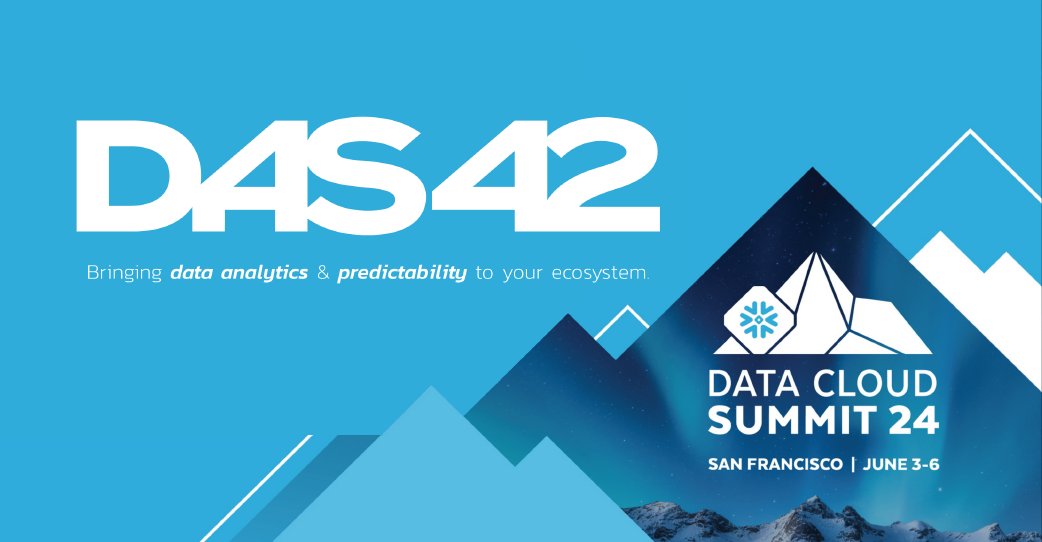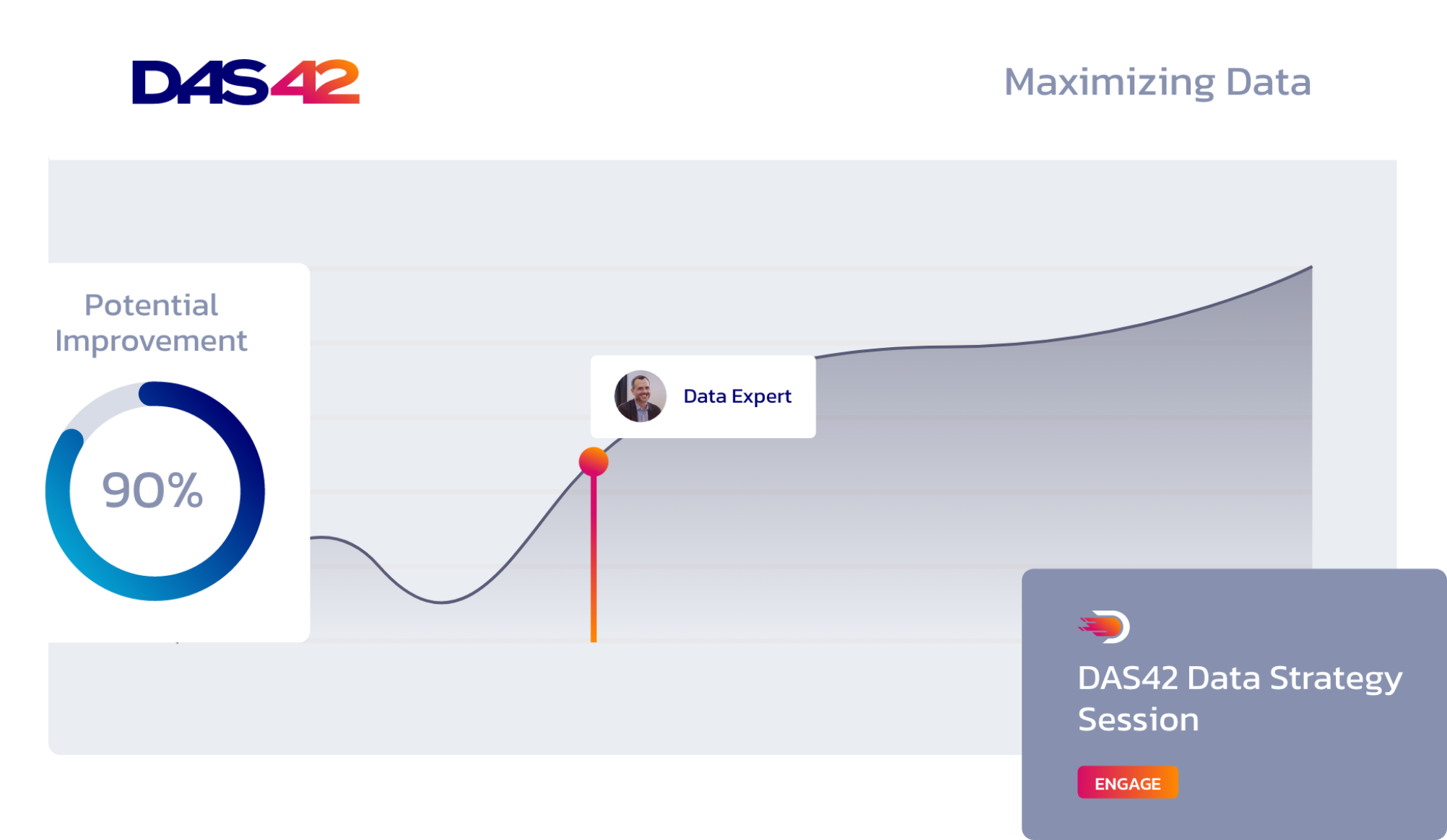A Q&A with DAS42 Senior Team Lead Logan Guerry
Inspired by recent EU legislative actions, we’re exploring how businesses can ride the wave of innovation while staying on the right side of regulations in the exciting and evolving world of generative artificial intelligence (Gen AI).
DAS42 Senior Team Lead Logan Guerry explains the implications of the regulations and shares expert insights on how your business can not only survive but thrive in this dynamic environment.
Q. How do the new EU regulations on Gen AI differ from existing regulations, and what are the key components?
A: The new EU regulations represent a significant shift in the oversight of artificial intelligence, particularly in the realm of Gen AI. Unlike previous regulations, which were primarily localized to specific countries like the U.S. and a few European nations, these EU regulations provide a comprehensive framework for assessing and auditing new AI models entering the market. Essentially, it’s akin to the FDA’s process for testing drugs. When companies like Google or Facebook develop a new Gen AI algorithm or large language model (LLM), such as a chatbot model like ChatGPT, government regulators and third parties will review it to ensure ethical and legal compliance. These review committees will ultimately ascribe a risk rating and requirements for model transparency. This regulation marks a landmark step in regulating a broad range of AI models across the entire EU.
Q. How might these EU regulations impact US-based companies in the data analytics and AI sector, both in terms of challenges and opportunities?
A. The impact of EU regulations on US-based companies in the data analytics and AI sector extends beyond geographical borders. With multinational firms handling data from various regions, compliance with EU regulations, such as GDPR, has become a standard consideration. These new regulations introduce challenges in describing the workings of complex predictive models, which are increasingly nuanced and difficult to interpret. Regulatory bodies now demand greater transparency, requiring companies to articulate not just the predictions made by their models but also the underlying rationale. This necessitates a higher level of visibility into model operations and decision-making processes, posing both challenges and opportunities for US-based companies as they navigate the evolving regulatory landscape. These regulations also present opportunities for companies to differentiate themselves by offering EU-compliant solutions, enhancing credibility, and potentially expanding their market reach.
Q. How can businesses bridge the gap between compliance requirements and the pursuit of innovation while complying with the new regulations?
A. Businesses must ensure their predictive models provide transparent explanations for their decisions. It’s not enough to simply make predictions; companies need to articulate the reasoning behind those predictions, detailing the factors and data points influencing the outcome for each individual output. Tools like Snowflake and Dataiku are invaluable in this regard, as they streamline the process of incorporating descriptive features alongside predictions. By prioritizing transparency in model development, businesses can remain compliant while exploring new predictive use cases and driving innovation forward.
Q. How can businesses implement best practices to ensure regulatory compliance and foster customer trust in their products and platforms?
A. It’s crucial to carefully vet the model type selected for the specific business use case, particularly for LLMs or similar technologies. For example, when implementing a chatbot to handle customer queries autonomously, businesses must ensure that the chosen LLM model complies with regulations, such as those set forth by the new EU commission. Failing to do so could lead to significant rework and legal complications should the organization seek to offer its services in the EU or make use of cloud infrastructure housed there.
Additionally, designing a robust MLOps framework that facilitates easy migration between different model types is essential. This framework should allow for seamless transitions, even as new models are introduced to the market. Tools like Dataiku can streamline this process by automating many tasks involved in maintaining and updating models. By investing in an MLOps framework that supports quick model iteration and adaptation, businesses can stay agile and responsive to regulatory changes while maintaining the functionality and reliability of their products and platforms.
Q. Could these EU regulations pave the way for a de facto global AI ethics and governance standard?
A. There’s potential for these regulations to influence global standards in AI ethics and governance. While they represent a significant step forward, there are opportunities for improvement, particularly regarding the focus on model types over input data. A comprehensive approach that considers both model transparency and the ethical sourcing of input data would be ideal. As experts in data science and machine learning have long warned, the ethical risks of poorly vetted predictive input data are high. Whether these regulations become a de facto global standard will depend on how other regions respond and whether they seek to adopt a more sweeping framework that additionally regulates what types of predictions can be made on different types of data.
Q. How can businesses utilize regulatory frameworks to promote innovation and secure long-term growth advantages?
A. Businesses can leverage regulatory frameworks to their advantage by focusing on transparency and innovation in their AI models. This primarily affects the developers of these models, such as tech giants like Google and Facebook. Being the first to market with a highly transparent Gen AI model that also incorporates advanced features and statistical frameworks positions them to dominate the market. However, for businesses that utilize these models, the advantage is somewhat murkier.
Compliance with regulatory standards can be a selling point for organizations building products like chatbots or predictive tools on top of models available from the likes of Amazon, Facebook, OpenAI, and Google. They can market themselves as EU-compliant solutions by using approved model types and implementing transparent audit practices. This boosts their credibility and opens up opportunities in the EU market. However, the extent to which these regulations will be enforced and audited remains uncertain. Nonetheless, there’s a real possibility that non-compliant products may be barred from the EU market, highlighting the importance of adherence to regulatory standards for businesses seeking sustainable growth.
Partner with DAS42
As businesses navigate the complexities of Gen AI regulations, partnering with DAS42 can provide invaluable support. Our expertise in data analytics and AI consulting ensures that businesses not only achieve compliance but also harness the power of innovation for sustainable growth. Connect with DAS42 today to navigate the regulatory landscape and unlock the full potential of Gen AI for your business.
DAS42 is a premier data and analytics consultancy with a modern point of view. We specialize in solving some of the most complex business challenges for the world’s most successful companies. As a Snowflake Elite Partner, DAS42 crafts customized strategies that create a single source of truth and enable enhanced and faster decision-making. DAS42 has a presence across the U.S. with primary offices in New York City and Denver. Connect with us at das42.com and stay updated on LinkedIn. Join us today on our journey to help you realize the possibilities of transforming your business through data and analytics.
Services provided









